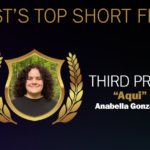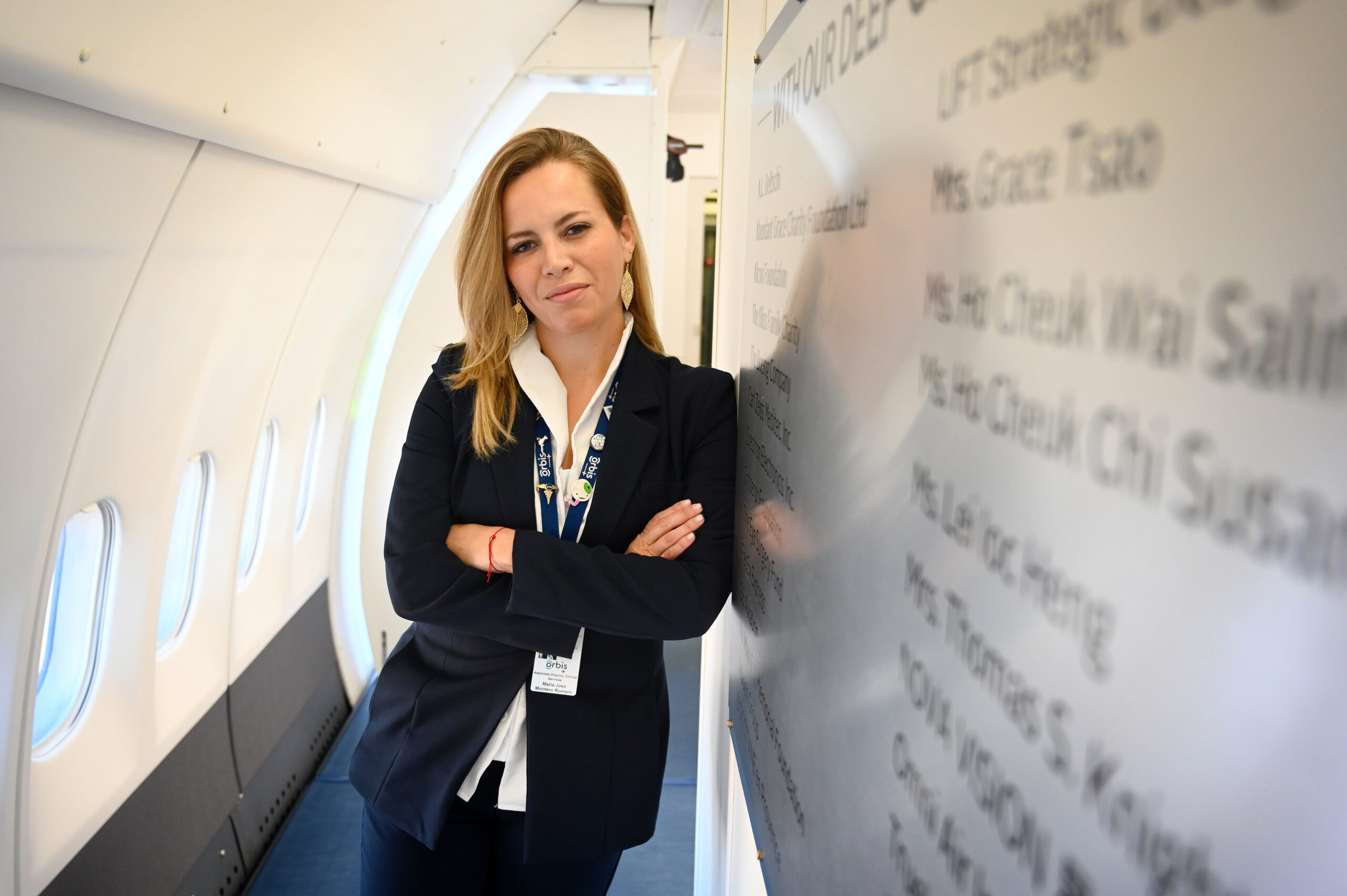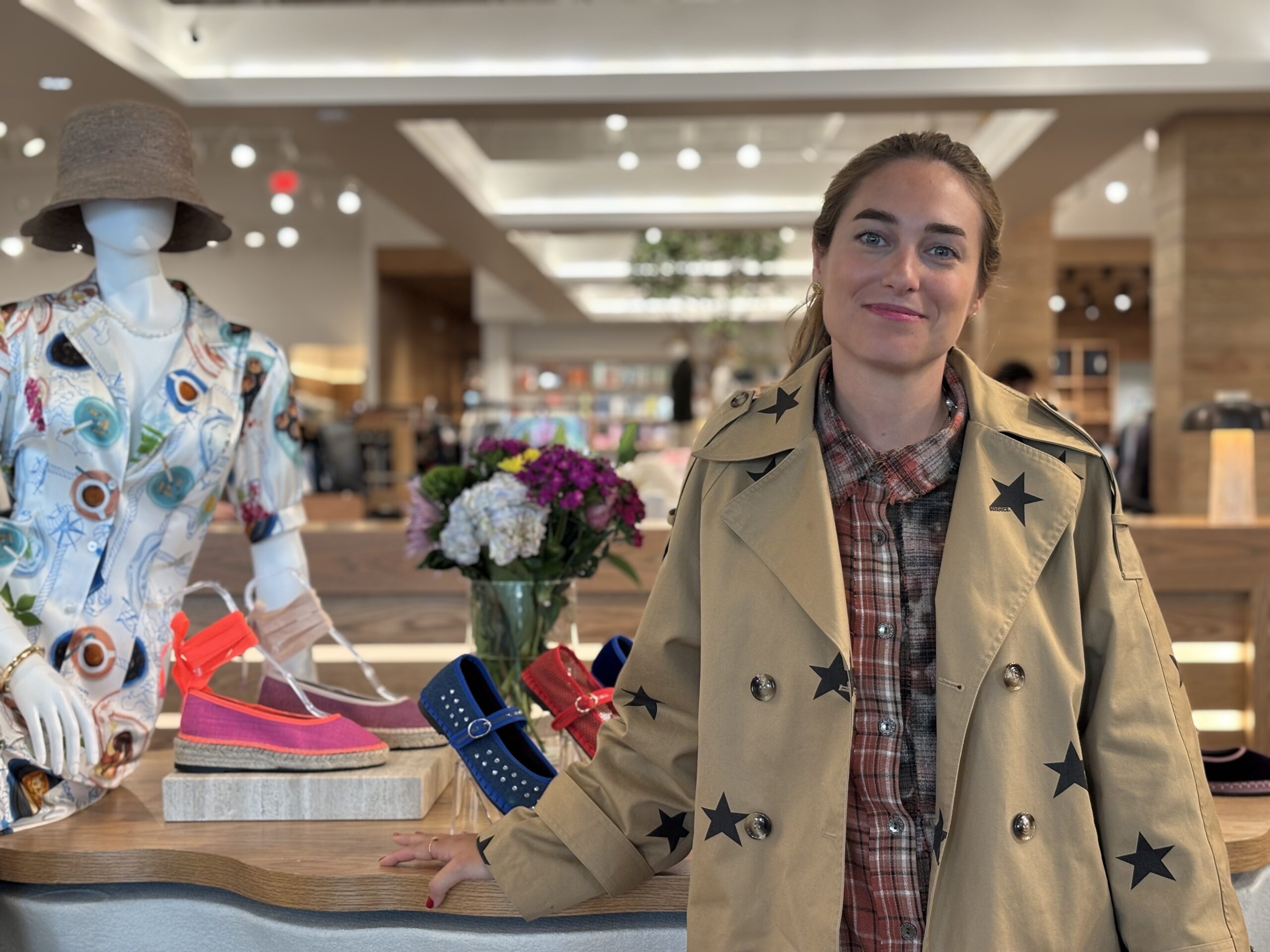This Women’s History Month we interviewed Dr. Maria Montero, a Latina working towards ending blindness for women. Dr. Montero is an ophthalmologist and surgeon for Orbis’ Flying Eye Hospital, an aircraft that travels the world to prevent blindness. Blindness is a gendered issue, with 112 million more women than men living with vision loss, including blindness. We discussed the barriers women face accessing eye health care, her experience providing cataract surgeries for free in underserved communities, and she gave her best tips about how to protect your eyes while using beauty products.
What inspired you to pursue a career in ophthalmology, particularly focusing on preventing avoidable blindness?
Cataract surgery made me want to be an ophthalmologist. When I realized that a cataract surgery, that takes only 15 minutes, could restore someone’s sight from only being able to see some light and shadows to 20/20 vision, I was hooked. I knew I could have a major impact on the lives of my patients as an ophthalmologist; I knew by helping people and restoring their sight, I would also be helping them regain independence.
Could you share some memorable experiences from performing free cataract surgeries in underserved communities around the world?
One of the most memorable moments for me while working with Orbis International took place during a project in Bangladesh. A little girl, who was about five years old, had undergone cataract surgery on the Flying Eye Hospital. The next day, when I removed her eye patch, she turned to her mother and smiled. Her mother then burst into tears. The translator turned to me and told me the little girl said, “I can see Mom!” She had never been able to see her mother before.
In your experience, what are some of the biggest challenges women face in accessing eye health services, especially in developing countries?
Women are often the primary caregivers for their families, but they may not be empowered to care for themselves. This can be due to limited financial resources and time. Limited finances are often directed towards the needs of men and boys, forcing women and girls to go without. Women who are burdened with household and childcare responsibilities may also be unable to leave the home to take time to care for their health. This means women, especially elderly women who start to lose their vision, become shadows in the dark, trying not to cause any trouble for their family. They stop doing activities that may cause them to have an accident because they can’t see anymore.
I have also seen women who can’t access eye care due to an inability to travel and safety concerns. Women often have fewer options for travel than men and are more vulnerable to unsafe situations away from home. Older women may require assistance, which poor families cannot provide.
In addition, women and girls, for cultural and other reasons, may not seek care from a male practitioner. Globally, women represent only 25-30% of ophthalmologists and 35-45% of professionals-in-training, few of whom are in low- and middle-income countries.
How does Orbis contribute to addressing these challenges and providing eye care to those in need?
Orbis works to remove the barriers that keep women and girls from accessing eye health services and increasing the number of women working in ophthalmology. We do this in many ways, but two very important methods include working to ensure that women can access the eye care they need and training women in eye health. In particular, making eye care available closer to home, especially in remote communities, eliminates barriers like distance that keep women from getting the help they need. We also work to increase the number of women in the eye health workforce by making training and support available to women around the world and supporting them to succeed in their roles. In turn, this improves eye care access for women, who in many cases, for cultural or other reasons, are more likely to seek care for themselves and their children from a female provider.
What are some common misconceptions about eye health that you encounter in your work?
In my work in Mexico and with Orbis around the world, I encounter many myths about eye health. People have told me they believe a chalazion, a small swelling or lump on the eyelid caused by a blocked gland, can be cured with smoke from a cigarette. I have also met people who believed chamomile water can cure conjunctivitis, breastmilk makes a baby’s eyelashes longer, and holy water can improve one’s vision.
Another major misconception I encounter on almost a daily basis in my work is not understanding the importance of regular eye exams. Eye exams are critical for your eye health and overall health regardless of the presence of any vision loss. There are diseases, like diabetic retinopathy, that can only be detected by an eye exam and must be caught early to prevent future vision loss. I also always tell new parents to have their babies’ eyes checked by an optometrist or ophthalmologist as a preventive measure. A pediatrician may not be trained to catch conditions, like retinopathy of prematurity, that can lead to irreversible blindness or vision loss.
As a beauty enthusiast, what are some eye care tips you would recommend, especially for young women who use cosmetics frequently?
Always remove your makeup and look for makeup mostly made of natural ingredients to protect sensitive eyes. I have recently seen girls under 13 years of age taking collagen supplements to grow out their eyelashes, which is unnecessary because our borides make enough collagen until around age 30, which is when I believe it is more suitable to take as a supplement.
I have also seen girls under 11 years of age using foundation or products to make their skin more even or “glowy”, which is also unnecessary for young girls who already have supple, beautiful skin. Constant use of these products when you are so young can make the skin dry.
What advice do you have for young women who want to protect their eyes while still enjoying makeup and beauty products?
During the upcoming warm weather, use eye lubricant drops (nothing with vasoconstrictive agents) every four hours to keep your eyes hydrated. Similar to how an eye cream prevents dryness of the skin around the eyes, eye drops can have a similar moisturizing effect inside the eye, but unlike with an eye cream, it is best only to use drops when dry eye is detected.












Amazing information! What a wonderful article! So inspiring.